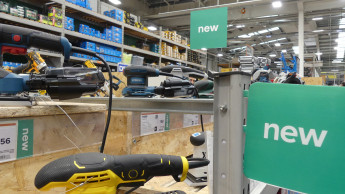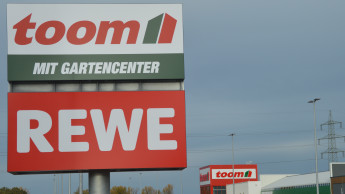A new development is becoming apparent in the US home improvement market: the big are getting bigger and the smarter small ones are surviving
The company announced that its number of new openings would be roughly halved over the next five years. Lowe’s, however, will in future continue to open about 200 outlets annually, as it enters new markets and strengthens existing ones in the ongoing battle with Home Depot.
Meanwhile, the independent hardware and DIY stores have realised that the increased margins being sought by the two big chains are to their advantage in the competitive battle for survival. Moreover, they are in a position to use variable pricing, either by themselves or with the help of their wholesale suppliers. Which means they can be more competitive on price-sensitive items, while enjoying higher margins on exclusive items and expanded assortments not carried by the two giants.
Menards, the number three chain in the USA, is continuing to grow in the Midwest, opening new stores that are frequently twice the size of those of Home Depot and Lowe’s. While these stores are indeed “big boxes”, they are fitted with gondolas instead of warehouse racking, which gives them a more female-friendly format. Their inventory also includes more product categories than the two publicly-owned chains. Many industry observers maintain that Menards is the most price-competitive of the three major players.
A great number of small independent chains are now concentrating on serving contractors and builders, i.e. the professional market, where the personal service they offer sets them apart from Home Depot and Lowe’s. Their inventory is more concentrated on building materials and lumber products, which means in effect that they are leaving the shelf-goods market to hardware stores and the big boxes. Their inventories of hardware, plumbing and electrical, etc, are shrinking down to the basics.
Home Depot is trying to get into the building market by buying up other businesses and establishing new divisions designed to service the builder and the professional customer. This amounts to recognition of the fact that their big boxes with separate contractor entrances are doing no more than filling a gap: this is not the way to become a major supplier to local builders and contractors.
A classic example of this shift is the continuing growth of privately-owned 84 Lumber (v. the detailed report at www.DIYglobal.com/Trade topics), a no-frills company with some 500 outlets and 50 or more new openings annually. With its low-cost locations the chain can operate at margins that are far lower than those of Home Depot or Lowe’s. The company also employs more than 2 000 outside sales people who regularly call on builders at their various job sites.
As a public company of such a huge size, Home Depot is finding it increasingly tough to rack up the kind of sales gains it did when it was smaller. Which is why it is expanding into wholesaling and other segments of the industry in order to satisfy shareholders and stock market analysts. Lowe’s, with sales still far below those of Home Depot, apparently feels it can continue to open big-box units. In terms of sales gains, Lowe’s (2005: +18.6 per cent) has outpaced Home Depot (+11.5 per cent) for the last few years.
Lowe’s has announced its intention of expanding into Canada in 2007, and has opened an office there. Home Depot is already well established and very successful in that country, and in Mexico as well. Even though speculation continues about Depot’s possible expansion into Europe, it seems more likely that the company is more interested in China, where it was reported to be in discussions with the leading home centre chain, Orient Home, about buying into it. The already crowded European market does not have the future potential of the Chinese market.
Download:

 Menü
Menü















